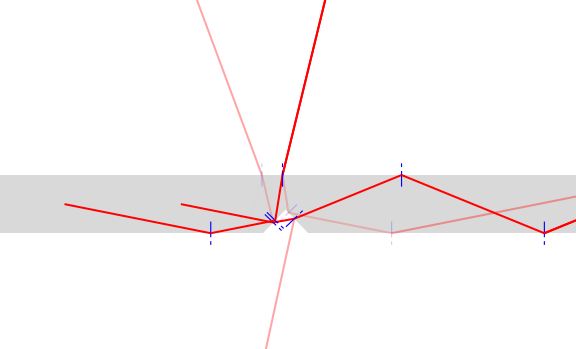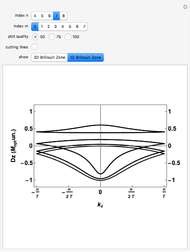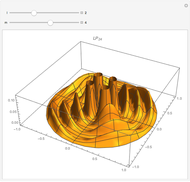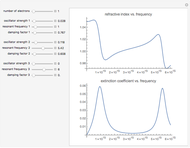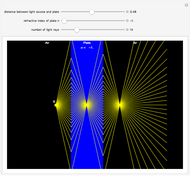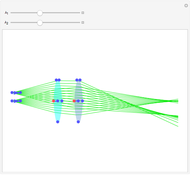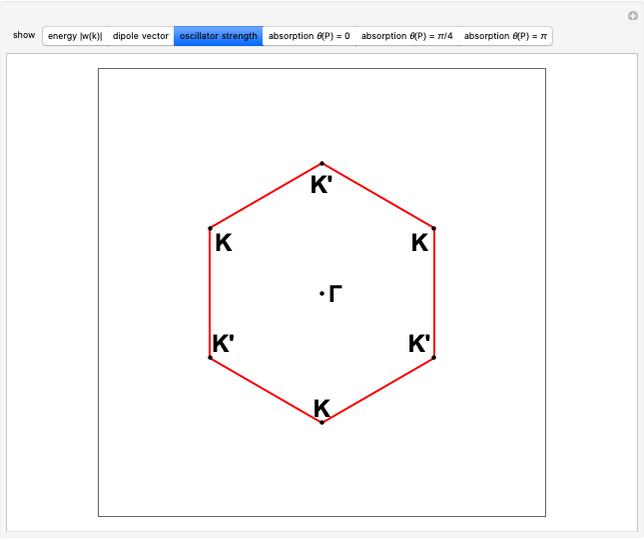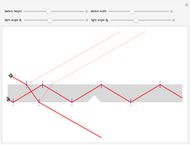Defects in an Optical Fiber

Requires a Wolfram Notebook System
Interact on desktop, mobile and cloud with the free Wolfram Player or other Wolfram Language products.
Light can propagate in an optical fiber by total internal reflection (TIR) when the outside medium has a lower refractive index than the core. However, light can still be refracted through the boundary if the angle between the light and boundary is greater than the critical angle. Optical fibers are usually cladded with another material to increase the critical angle and to protect the core. This Demonstration shows the effect of a triangular defect in the core. The origins of two light rays can be set with locators.
Contributed by: Aaron T. Becker and Hoang Nguyen (October 2016)
(University of Houston)
Open content licensed under CC BY-NC-SA
Snapshots
Details
This Demonstration has a single optical fiber with index of refraction  (approximate value for PMMA Plexiglas) in a vacuum (index of refraction
(approximate value for PMMA Plexiglas) in a vacuum (index of refraction  ). A light ray is emitted from each locator at a user-specified angle.
). A light ray is emitted from each locator at a user-specified angle.
A light ray's angle of incidence  is measured from the normal to the boundary.
is measured from the normal to the boundary.
When a light ray intersects a boundary between two media with different indices of refraction, the light is reflected. If the latter medium has a lower index of refraction or if  is greater than the critical angle
is greater than the critical angle  , the light is refracted as well.
, the light is refracted as well.
If the light ray is in a medium with index of refraction  interfacing with a medium of index of refraction
interfacing with a medium of index of refraction  , with
, with  , the critical angle is
, the critical angle is  .
.
The refracted light ray has angle  . If there is a refracted ray, the ratio of reflected light is
. If there is a refracted ray, the ratio of reflected light is  and the ratio of refracted light is
and the ratio of refracted light is  .
.
Permanent Citation
